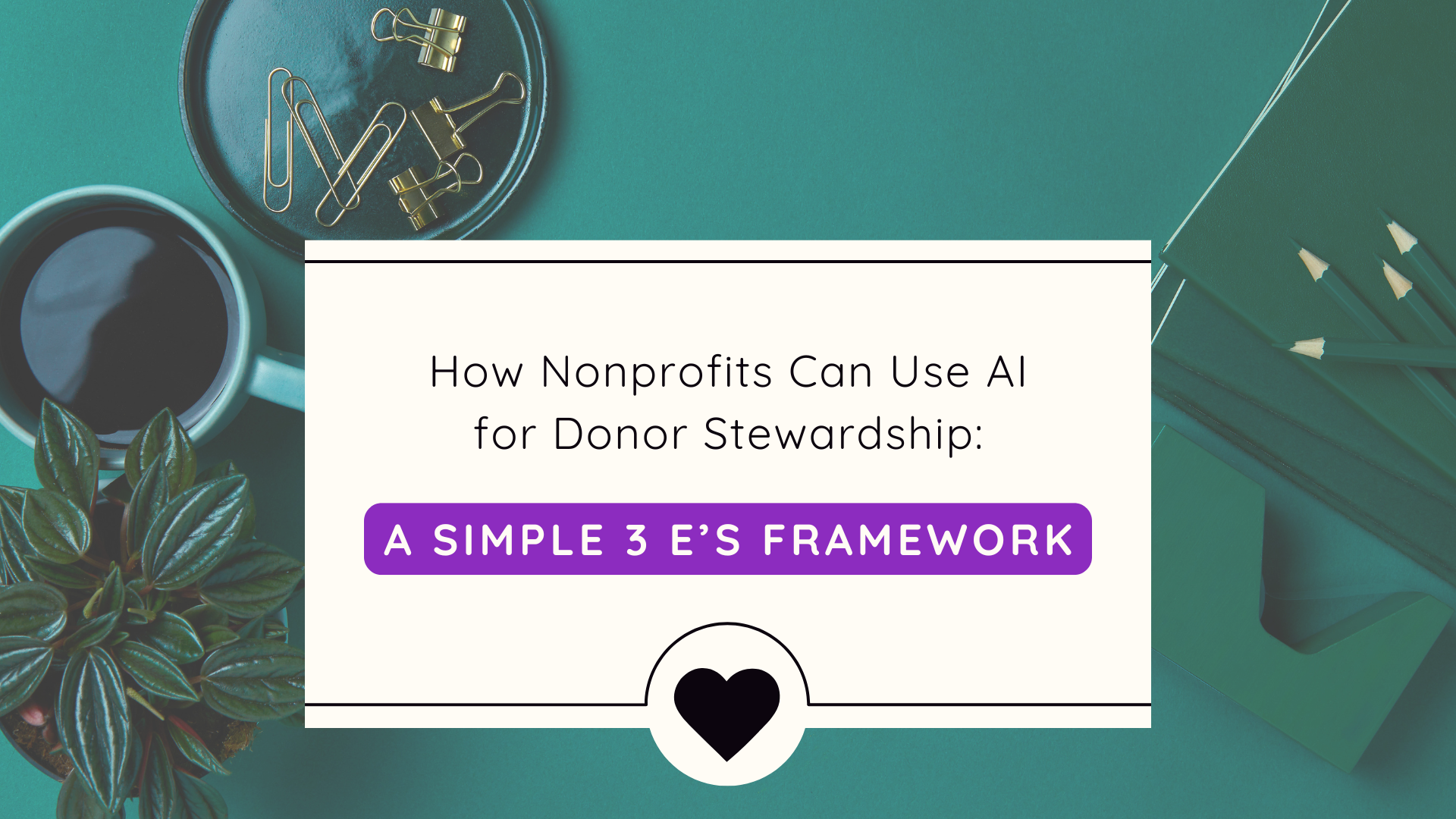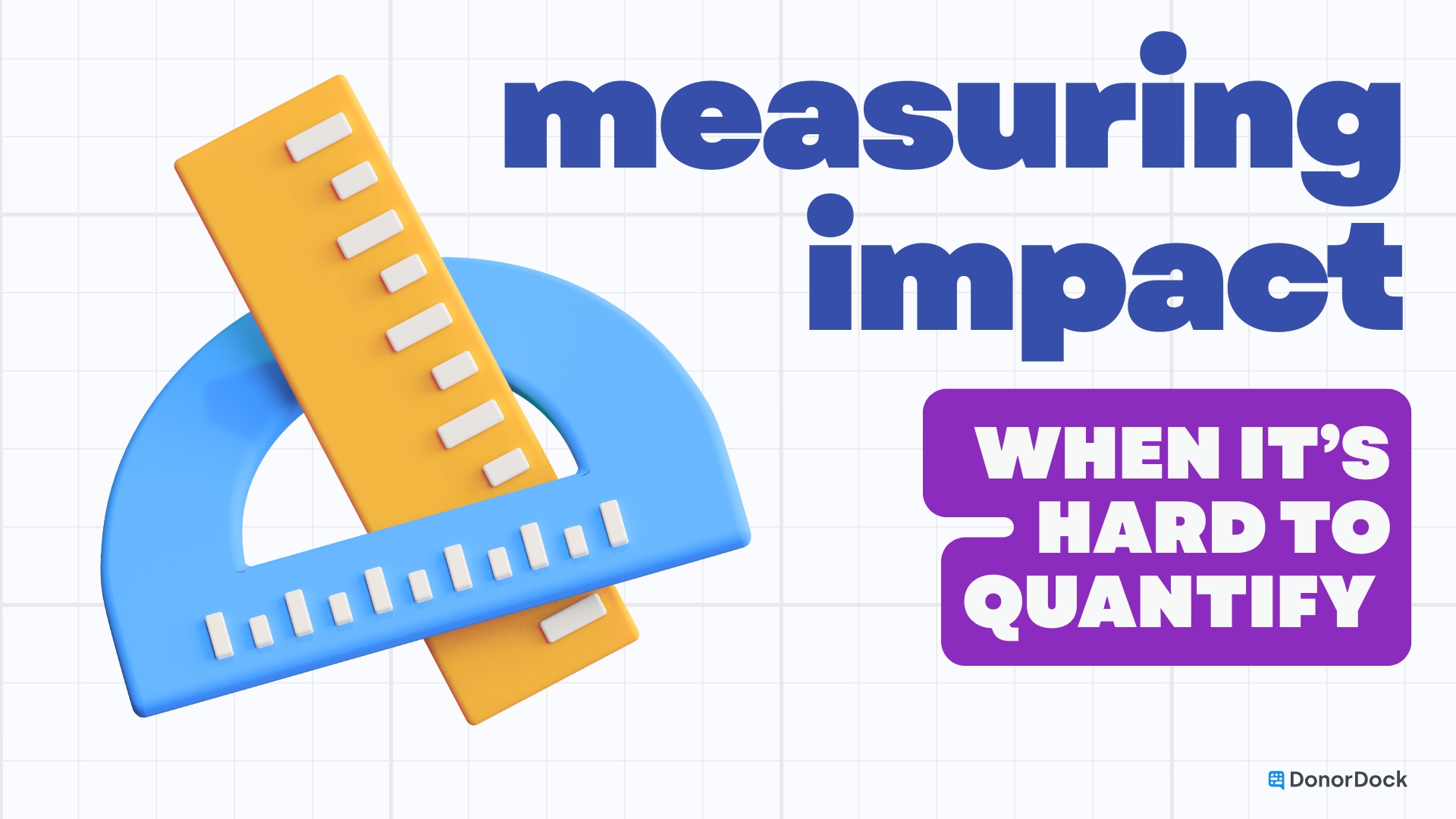Have you ever tried to piece together a jigsaw puzzle with missing pieces? That's the challenge many face when recruiting nonprofit board members. You're searching for those unique individuals who not only fit into your organization's mission and vision but also fill gaps in skills, experience, and diversity.
It’s no easy task. The process of recruiting for your nonprofit feels overwhelming, and having the wrong board members can be disastrous! But what if there was a way to simplify the search?
Whether you’re new to the nonprofit world or you’ve been here for a while, take a deep breath: we’ve got you covered.
Table of Contents
- Building a pipeline for new nonprofit board members
- Developing a nonprofit board member recruitment process
- Engaging the local community in board recruitment
- Conclusion
- FAQ
Building a pipeline for new nonprofit board members
Finding the right board members is a challenge that many nonprofit leaders face. As reported by Board Effect, 58% of nonprofit leaders find it difficult to recruit new board members and only 73% believe they have the correct mix for effective governance.
To strengthen your nonprofit organization, building a pipeline of potential board members is essential. This allows your nonprofit to simplify board member recruitment and make it easier to determine whether you have a good mix for effective governance.
Scouting potential candidates

Existing board members play an important role in recruiting others as they often have firsthand experience dealing with challenges related to board recruitment. They understand what makes a great member: commitment, passion for the mission, willingness to fundraise, etc., which helps them select strong contenders.
An engaged current member also provides prospective board members insight into the job description, making it easier for potential ones to decide if this position suits them.
On top of that, we often surround ourselves with like-minded people. Your board members most likely have contacts who would also value your mission and be driven to do good for their community.
By asking your board members to play a role in recruiting new members, you are able to look beyond your existing circle and cast a wider net into your local community or professional networks.
Create a Nomination Committee

The first step involves identifying potential candidates who align with your organization’s mission and vision. To do this well, create a Nomination Committee.
The Nomination Committee is a selection of board members who will look out for individuals whose skills and experiences could bring value to your cause.
This process might involve researching community leaders or other influential figures who have shown interest in similar causes. They might also consider recommendations from current board members or staff within the organization itself.
Evaluating potential nonprofit board members
In addition to scouting prospects, the Nomination Committee will be in charge of evaluating potential candidates effectively. Evaluation doesn't just mean looking at resumes - it includes understanding how a candidate would fit into existing dynamics on the board and assessing their commitment level towards achieving organizational goals.
Pathways for engagement
Volunteering initiatives offer great platforms for prospective board candidates to learn about the workings and values of your organization first-hand.
Don’t forget to look for potential candidates in those already contributing to your nonprofit organization. Their current involvement means they have shown interest, which could translate into a more engaged future board member.
Leading With Intent's 2015 report indicates many nonprofits find volunteer participation beneficial before offering formal roles on their boards.
Developing a nonprofit board member recruitment process
A well-structured board recruitment process can set your nonprofit up for success. Let's get into the nuts and bolts of creating an efficient strategy to attract potential candidates.
1. Look for gaps in your board
Nonprofit boards are a vibrant mix of skills, perspectives, and experiences. Yet sometimes gaps can emerge. These might be related to specific expertise or diversity aspects that aren't adequately represented.

The first step is acknowledging the existence of these gaps on your existing board. Assessing the current board composition allows you to spot where improvements can be made. It's like taking inventory before going grocery shopping - it helps ensure nothing essential gets overlooked.
Then you can build a better nonprofit board by identifying the specific skills, experiences, or perspectives in potential candidates that will fill those gaps.
Understand the importance of diversity in perspectives
A diverse board brings unique perspectives and better decision-making. It's about finding people passionate about your cause who can bring financial expertise, fundraising ability, or other specific skills to the table.
A diverse board is better equipped to make well-informed decisions. For example, if everyone on your nonprofit’s board has a background in finance but lacks experience in marketing or community outreach, there will likely be missed opportunities for growth and connection with potential supporters.
Apart from skill sets though, having diverse backgrounds among members increases problem-solving because different life experiences bring unique insights into challenges faced by nonprofits.
Step 2: Develop Job Descriptions
Writing a job description for board members is like mapping out the journey of your nonprofit. You need to clearly outline the responsibilities and expectations that come with being on the board.

A comprehensive job description not only attracts potential candidates but also sets them up for success once they join. The key components should include specific skills needed, the time commitment expected from each member, and their role in effective board governance.
You can use a job description to help potential board members think about how they specifically fit into the puzzle of your nonprofit. As Ryan Goodman shared on Beyond the Donation episode 17 “There are so many skill sets between the unique individuals that come together to support that organization. [As a board member], it’s sitting down saying, ‘Hey, where do my skill sets fit and fill a gap that exists inside of the board?’
Step 3: Create an application form
It’s also wise to create an application form specific for those seeking a board position; this way you'll have access to pertinent information upfront, enabling better evaluation during the recruitment process. It's all about keeping channels open so when vacancies arise, there are ready recruits willing and able.
Tip:
You can create a simple application form and embed it directly on your website through DonorDock.
Step 4: Nurturing future leaders from within
Start by looking at your own circle. Who are the donors that consistently engage with your nonprofit? Maybe they aren’t your major donors, but they give annual or recurring donations. Not only do they give regularly, but they also engage with your nurture emails or social media posts.
What about volunteers who generously give their time? Do you have any people who regularly show up and support your organization? These donors and volunteers are already giving their limited time and attention to your nonprofit, which means that they value the work that you are doing. They are all in on your mission.
Start to nurture these relationships. This may include inviting potential recruits to attend events, meet team members, or even sit in during regular meetings so they can understand what being part of such a collective endeavor entails.
Build trust with open communication
It’s also important to maintain transparency with potential board member recruits. Clear communication helps foster trust with your team. And it’s important that potential board members trust your nonprofit organization and that you are able to trust them.
Keep all current members up to date about the state of the recruiting process. Board members should be playing an active role in recruiting, so they shouldn’t feel blindsided by new members being nominated. And board members being recruited also shouldn’t be caught off guard. They should understand the purpose of engagement activities.
Key Takeaway:
Building a pipeline of potential board members is key to strengthening your nonprofit. Start by broadening recruitment methods and creating opportunities that attract interested individuals. Look within your existing volunteers, supporters, or local community for candidates who are familiar with and committed to your cause. Make sure you have well-defined job descriptions at hand while recruiting, setting clear expectations always leads to better results.
Engaging the local community in board recruitment
Finding people through community outreach
The goal here is twofold: create awareness while identifying possible recruits for future open spots on your nonprofit’s governing body.
It could involve speaking engagements at civic clubs or participation in different public forums where topics related to your nonprofit’s mission are discussed.
Another good strategy is involving current volunteers since they’re usually deeply committed and understand how your nonprofit functions.
Leveraging social media
Social media is a great way to engage directly with people passionate about similar causes. Groups dedicated to volunteering activities may have potential board candidates.
Remember – diversity enhances decision-making abilities and contributes towards effective board governance. So, don’t shy away from exploring different avenues while finding your next board member.
Key Takeaway:
Local communities are a great place for recruiting board members. Networking at relevant events and partnering with other local nonprofits can help you find ideal candidates. Additionally, community outreach programs not only raise awareness but also identify potential recruits. Social media platforms can connect you with individuals committed to similar causes, enhancing the diversity of your board.
Conclusion
Recruiting nonprofit board members isn't a walk in the park. It's about identifying those unique individuals with the right skills and experience, who are also passionate about your mission.
- Creating a pipeline allows your nonprofit to streamline the process. You need to understand the current gaps in your board that need to be filled.
- Current board members help with recruiting, by scouting for and nominating new potential members.
- By creating opportunities for community engagement, your nonprofit can meet new individuals who may be the missing piece to your nonprofit board puzzle.
But most importantly, look at the people who are already regularly giving to and engaging with your nonprofit. These are the people who have shown their passion for your mission and commitment to your cause.
Tip:
If you use a CRM that makes pulling reports easy and accessible, finding those constituents who are actively engaging with your nonprofit is a breeze.
Nurture your donor and board relationships with DonorDock. An easy-to-use Donor Management Platform built for nonprofits like yours.
FAQs about recruiting nonprofit board members
What is a good way to recruit board members?
Identify the skills your nonprofit needs, then seek out folks who have those talents. Build relationships and show how they can make an impact.
How do you ask people to join a nonprofit board?
Lay out the role clearly, explain why their specific skills are needed, and describe how their involvement will support the mission of your organization.
How do you screen board members?
You need to vet potential candidates carefully. Check references, verify credentials, and ensure alignment with organizational values and mission.
Can you hire a board of directors?
Nope - boards are volunteer positions in nonprofits. They serve because they care about the cause or the community it supports.












